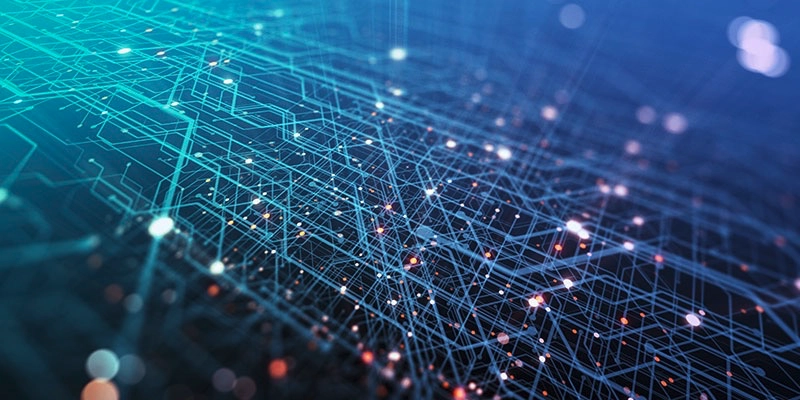AI-Driven Social Change: A Double-Edged Sword | Aug 2023
Innovations in artificial intelligence (AI) are pushing us into an AI-driven era that will rapidly change societies around the globe.

An AI-Driven Era
Innovations in artificial intelligence (AI) are pushing us into an AI-driven era that will rapidly change societies around the globe (Lee, 2018). But where are these advancements in AI-driven technologies taking us? And how will these innovations positively impact societies and advance social change? What challenges and costs will AI bring to societies? And how will these advancements and challenges impact economic inequality?
The impact of technological advancements on social change has been a double-edged sword throughout history. This article explores the advantages and disadvantages of AI and their potential impact on social change, with a focus on economic inequality.
The Dual Nature of Social Change
To gain a better understanding of how AI will influence social change, it is important to understand how technological advancements have influenced societies and their evolution across human history.
The cognitive revolution was a pivotal point in human history 70,000 years ago, during which humans developed complex cognitive abilities. These cognitive abilities led to the creation of complex social structures. Following this revolution, human societies transitioned through four stages—from hunter-gatherer communities to modern societies—each characterized by distinctive innovations and challenges that drove social change, illustrating the double-edged sword of progress (Harari, 2014).
Agriculture’s advent spurred the transition to settled societies, fueling significant developments such as writing, but it also introduced new dilemmas like land disputes and disease spread from population density. The Industrial Revolution marked another pivotal shift, driving mechanized production and progress in public health, yet also giving rise to environmental pollution, labor exploitation, and social inequality.
In the post-industrial era, society saw democratic governance, communication tech, and the service sector flourish. However, these developments also led to increased consumerism, economic instability, and privacy challenges. Today, we stand on the brink of another transformation: the rise of information and knowledge societies, dominated by digital technology, big data, and AI. Before analyzing the impact of AI, it is helpful to look at how the internet and social media technologies have impacted social change and economic inequality over the past two decades.
Economic Inequality
Internet and social media technologies have ushered in an era of new job opportunities and enhanced social mobility through access to digital educational and professional resources. Take, for instance, the rise of e-commerce platforms, which allow even small businesses to reach a global market, revolutionizing entrepreneurship. Similarly, Massive Open Online Courses (MOOCs) have democratized education, making it accessible to anyone with an internet connection.
However, these benefits have not been evenly distributed. A digital divide persists, with many communities lacking sufficient access to digital technologies, which in turn creates disparities in opportunities and outcomes. Thus, while some rise, others are left behind. For example, rural communities, elderly populations, people with disabilities, and marginalized racial, ethnic, and religious groups are more likely to face barriers to accessing these technologies. These groups miss out on the opportunities and advantages that the digital age offers, such as online education, remote work, and social networking. Their lack of access perpetuates cycles of poverty and limits upward mobility because they can't leverage the same resources as those with full digital access.
Similarly, AI is expected to stimulate job growth and economic development through increased productivity. Moreover, AI could potentially decrease economic inequality in certain contexts. For example, the nonprofit GiveDirectly uses AI to identify the poorest households and delivers cash assistance directly, reducing poverty. AI also has the potential to revolutionize job recruitment by accurately matching candidates’ skills and preferences with suitable opportunities, democratizing access for diverse backgrounds.
Yet, the advent of AI also brings challenges. For example, in Silicon Valley, these technologies have fostered economic growth, with the top 10% of households holding 66% of the region’s investable assets (Lazo, 2023). However, they’ve also exacerbated economic disparities, with the top 1% owning 48 times more wealth than the bottom 50%. While technological advancements have created prosperity, they’ve also fostered stark inequalities. Around 23% of residents in Silicon Valley lived under the poverty line in 2021, and about 220,000 households had fewer than $5,000 in total assets. Furthermore, income inequality rose by 5% in Silicon Valley in 2021, diverging from the decreasing trend observed statewide and nationally. This highlights the need for inclusive growth policies. Another stark example is the lack of access to high-speed internet and devices. For example, 15,000 families right outside Silicon Valley don’t have access to these technologies (Fregni, 2020).
Another recent example of the double-edged sword of AI is the 2023 Writers Guild of America strikes. While AI’s potential to streamline writing processes and boost productivity may offer benefits, it also poses risks to job security for human writers. The strike, driven by concerns over AI replacing writers and poor compensation from streaming platforms, sheds light on economic inequality within the industry. Collective bargaining by writers’ unions highlights the power of social change in addressing disparities. However, resistance from influential stakeholders underscores the challenges in achieving collective action. This example emphasizes the need for ethical AI implementation and support mechanisms to safeguard workers during technological advancements.
Conclusion
The AI-driven era presents both merits and drawbacks for societies worldwide. Throughout history, technological advancements have been a large driver of social change, offering both progress and setbacks. As we move into the realm of AI, we must learn from our past and tread carefully.
As we navigate this AI-driven era, it is essential to prioritize inclusivity, fairness, and ethical considerations. Policymakers, industry leaders, and society as a whole must work together to ensure that AI-driven innovations promote social change for the betterment of all. By learning from the lessons of history, embracing innovation responsibly, and addressing economic inequality head-on, we can steer AI toward a future that benefits everyone and advances positive social change.
Potential Discussion/Debate Questions:
- How might the development of AI shift traditional job markets and social structures? What new inequalities might emerge from this shift?
- Discuss the role of collective bargaining and unions in advocating for fair compensation and job security in the AI-driven era. What are their strengths and limitations?
- The Silicon Valley case study highlights the stark wealth disparities in one of the world’s tech hubs. Discuss how this situation might influence societal views on wealth, success, and meritocracy.
- Drawing from historical context, how have societies adapted to technological advancements in the past, and how might this inform our approach to integrating AI into our socioeconomic systems?
References
Fregni, J. (2020). There’s a digital divide in Silicon Valley, and it’s leaving students behind. Teach For America. https://www.teachforamerica.org/one-day/top-issues/theres-a-digital-divide-in-silicon-valley-and-its-leaving-students-behind.
GiveDirectly. (2021). Our Approach. https://www.givedirectly.org/.
Harari, Y. N. (2014). Sapiens: A Brief History of Humankind. Random House.
Lee, K. F. (2018). AI Superpowers: China, Silicon Valley, and the New World Order. Houghton Mifflin Harcourt.
Lazo, A. (2023, February). Silicon Valley wealth gap widens, with top 10% owning 66% of the region’s wealth. CalMatters. Retrieved from https://calmatters.org/california-divide/2023




